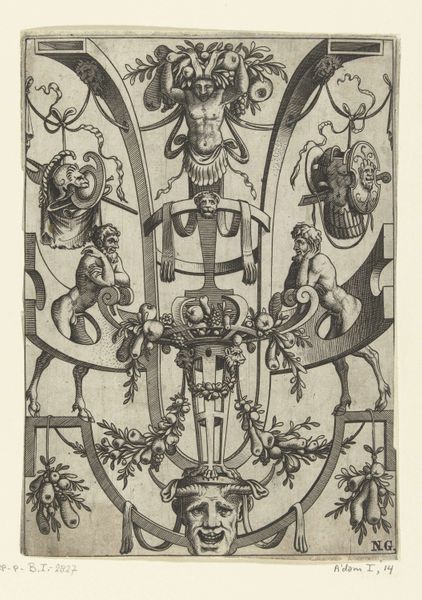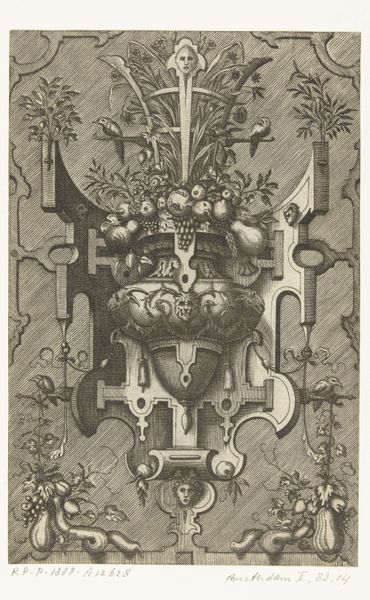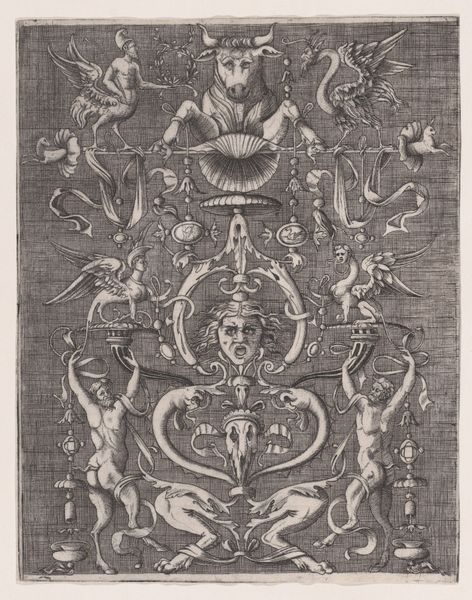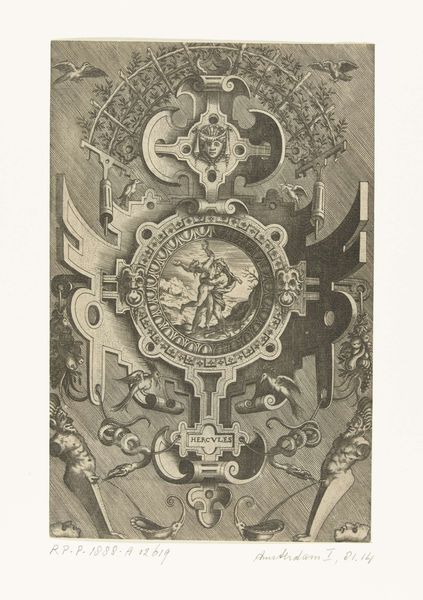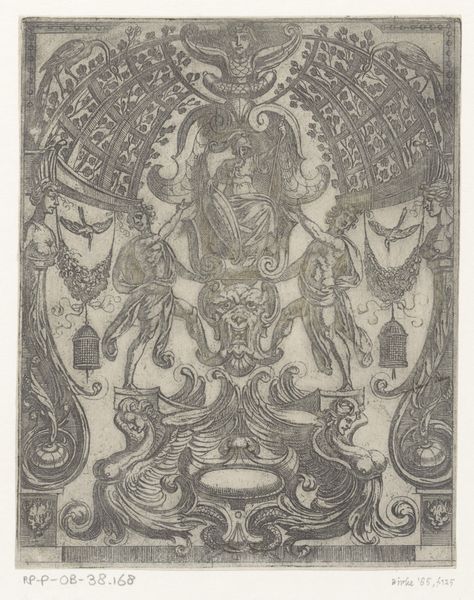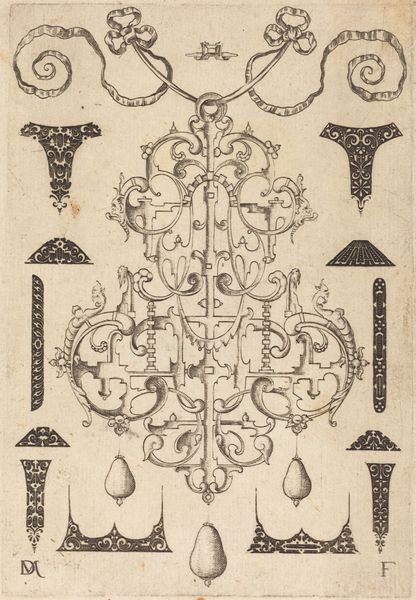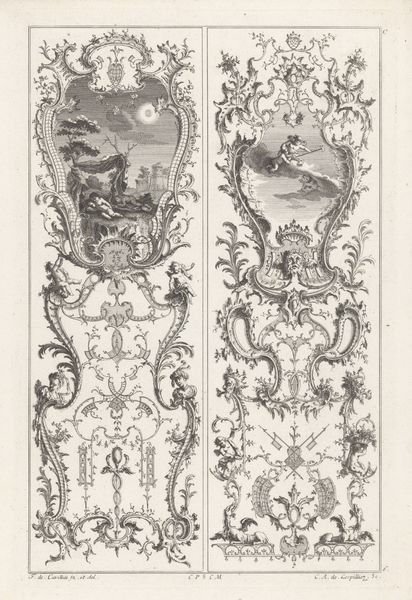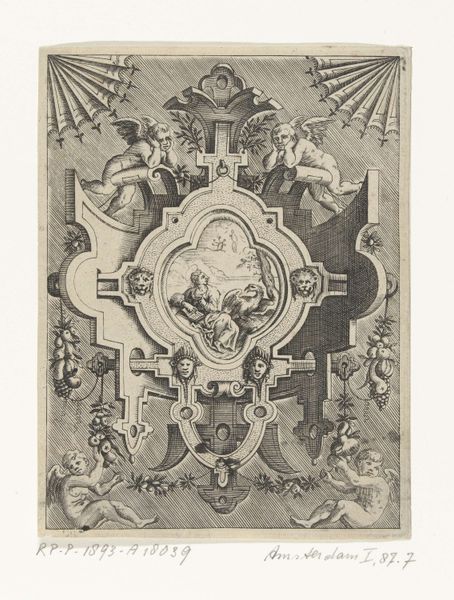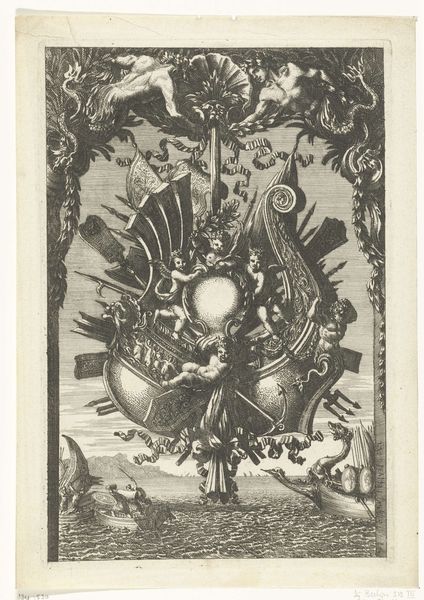
Dimensions: height 204 mm, width 136 mm
Copyright: Rijks Museum: Open Domain
Curator: Today we're examining "Twee kandelabers met rolwerk," or "Two Candelabras with Rolling Work," a print made in 1567 by Pieter van der Heyden, currently held at the Rijksmuseum. Editor: Immediately, the detail and symmetry strike me, a testament to the period’s fascination with ornate designs. It almost feels like looking at an architectural blueprint, full of baroque dynamism. Curator: Indeed, the work aligns with the Mannerist and Baroque aesthetics, known for their complex arrangements and allegorical flourishes. Consider how it challenges traditional representation by incorporating classical motifs with playful invention. What sociopolitical factors were in play here? Was this artwork, and others like it, intended to subvert or uphold the cultural norms? Editor: Looking at the candelabras themselves, I notice the curious blending of human and non-human elements – the stylized faces, the garlands of fruit, even what appear to be small animals suspended among the decorations. There's a constant interplay between organic and geometric shapes. It makes me think about transience, the cycle of life…and, maybe, vanitas symbols embedded throughout. Curator: Exactly. We might even decode certain symbols related to power and status—the arrangement of the composition can offer a narrative on social roles and the politics embedded within the household and court life of the time. Editor: The candelabras evoke ritual more than pure function. Light, after all, symbolizes knowledge and divine presence. Perhaps these objects, rendered in print, disseminated these ideas widely. What do you think about how those recurring motifs helped establish social order? Curator: It’s fascinating to imagine how its imagery spoke to gender roles, given that these prints were primarily circulated within a certain class. Did the representation of women play a role in bolstering the social hierarchy of the time? How did gender shape our understanding of baroque artwork then versus now? Editor: These swirling lines pull me into their intricate design, prompting a meditation on artistry, symbolism and how art evolves with each new perspective, over generations. Curator: And for me, this close observation further cements the importance of asking the critical questions about power dynamics inherent within artistic creation, challenging norms, and offering contemporary analyses to unlock new readings of past masterworks.
Comments
No comments
Be the first to comment and join the conversation on the ultimate creative platform.
